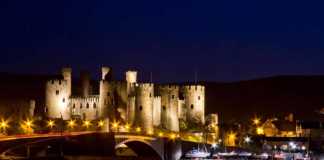Famous for vino, coffee and prosecco, Italy’s beverages are as diverse and as enjoyable as the country’s landscapes and food. Each region in Italy has its own favourite drink to wash down with the local food.
From drinking Bellini in Venice and Negroni in Florence to sipping wine in Tuscany or warming up with a Bombardino in the Alps, drink your way around the country. Enjoy the la dolce vita lifestyle with one of these Italian drinks in one hand and a gelato in the other, wherever you find yourself in Italy. Saluti!
Italian Drinks
Italian Cocktails
1- Bellini
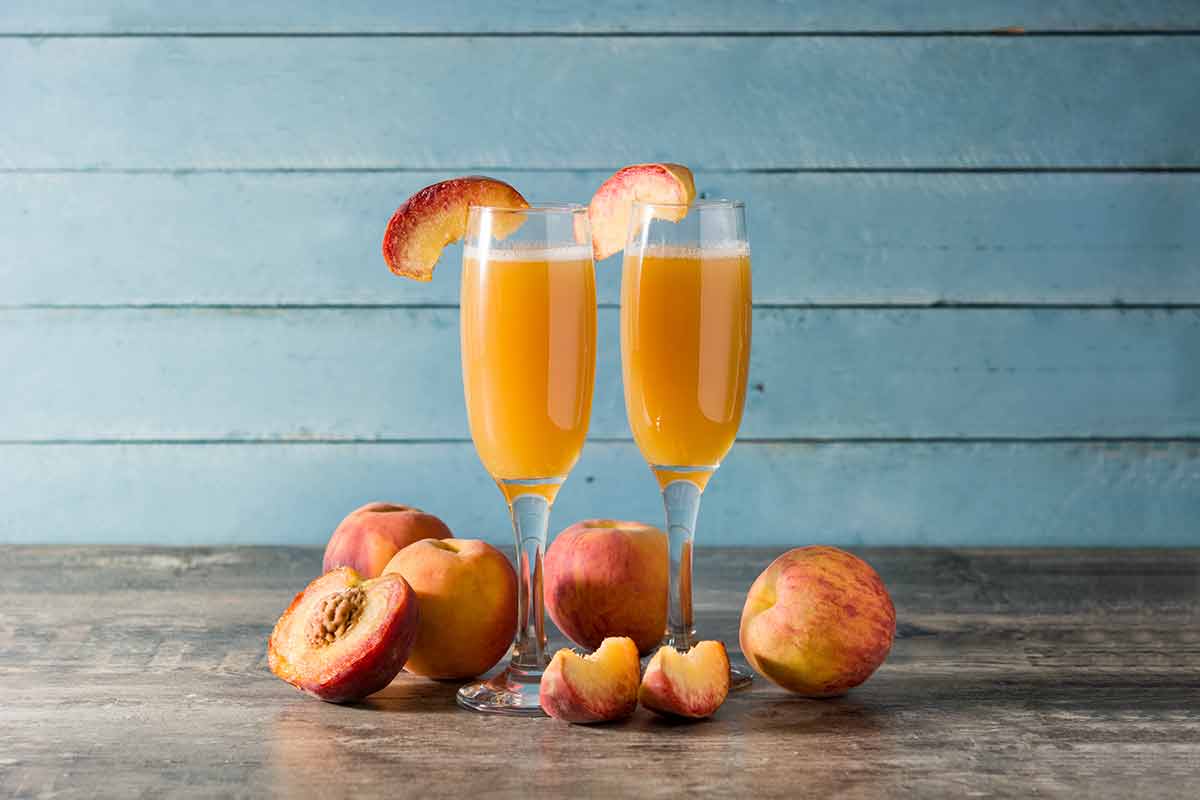
The first Bellini was created in 1948 by Giuseppe Cipriani in honour of local artist Giovanni Bellini.
It became a staple of Venice’s famous Harry’s Bar, a regular haunt for Ernest Hemingway, Humphrey Bogart and Truman Capote.
This sweet and fruity drink is delectable on a warm summer’s day and consists of only two ingredients: Italian Prosecco wine and peach purée.
It sounds easy to make, but a good Bellini is dependent on the quality of ingredients that go into the drink, with freshly picked peaches and a dry Prosecco being the best ingredients in summer.
You can still enjoy a refreshing Bellini out of season, but you’ll have to make do with frozen peaches for your Bellini’s peach purée.
Add a dash of raspberry purée to give your drink an extra dose of flavour and colour.
2- Campari and Soda
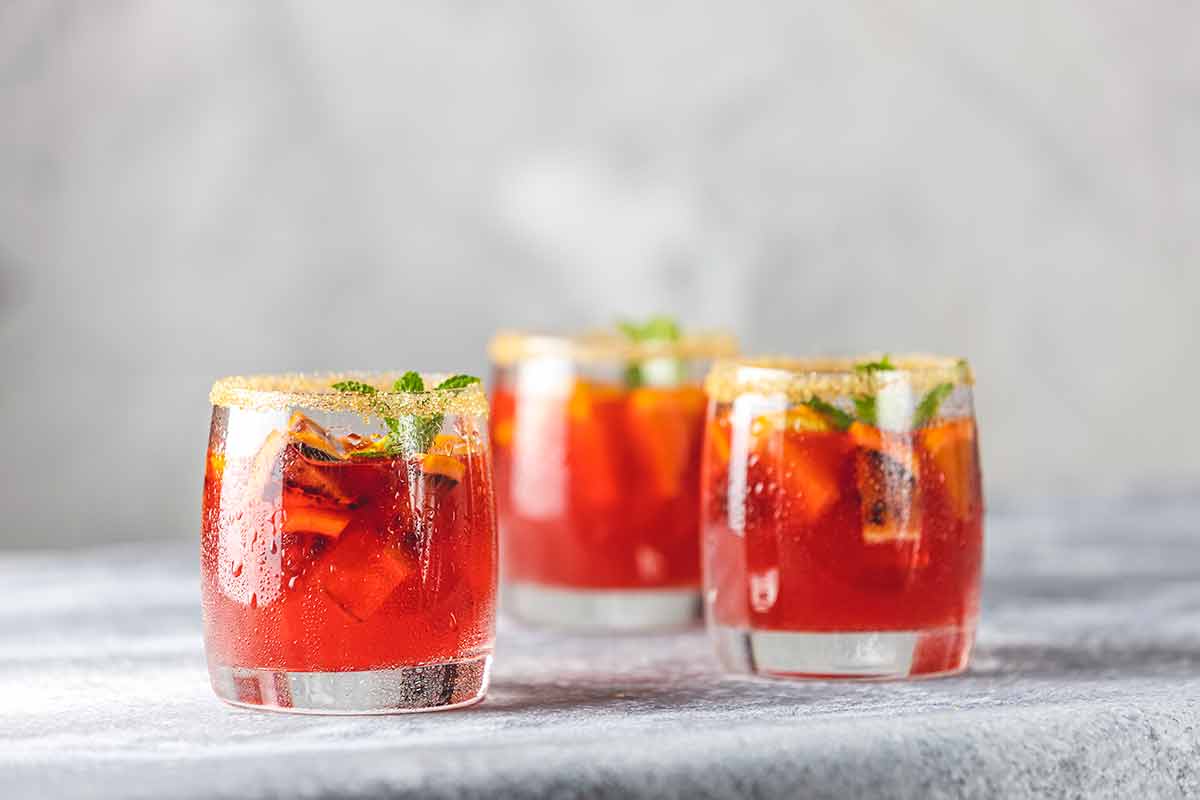
Campari is a bitter, blood-red Italian liqueur created by Gaspare Campari in Novara in 1860.
Best served with soda water and a slice or two of orange, a Campari and Soda is a delightful aperitif to enjoy before a meal and is a well-recognised cocktail today.
While the exact ingredients of Campari are a closely guarded secret by the manufacturers of the brand, you can taste hints of orange, cinnamon and cherry.
Campari and soda is straightforward to mix, usually consisting of one part Campari and two parts soda water, combined with ice and slices of orange.
3- Negroni
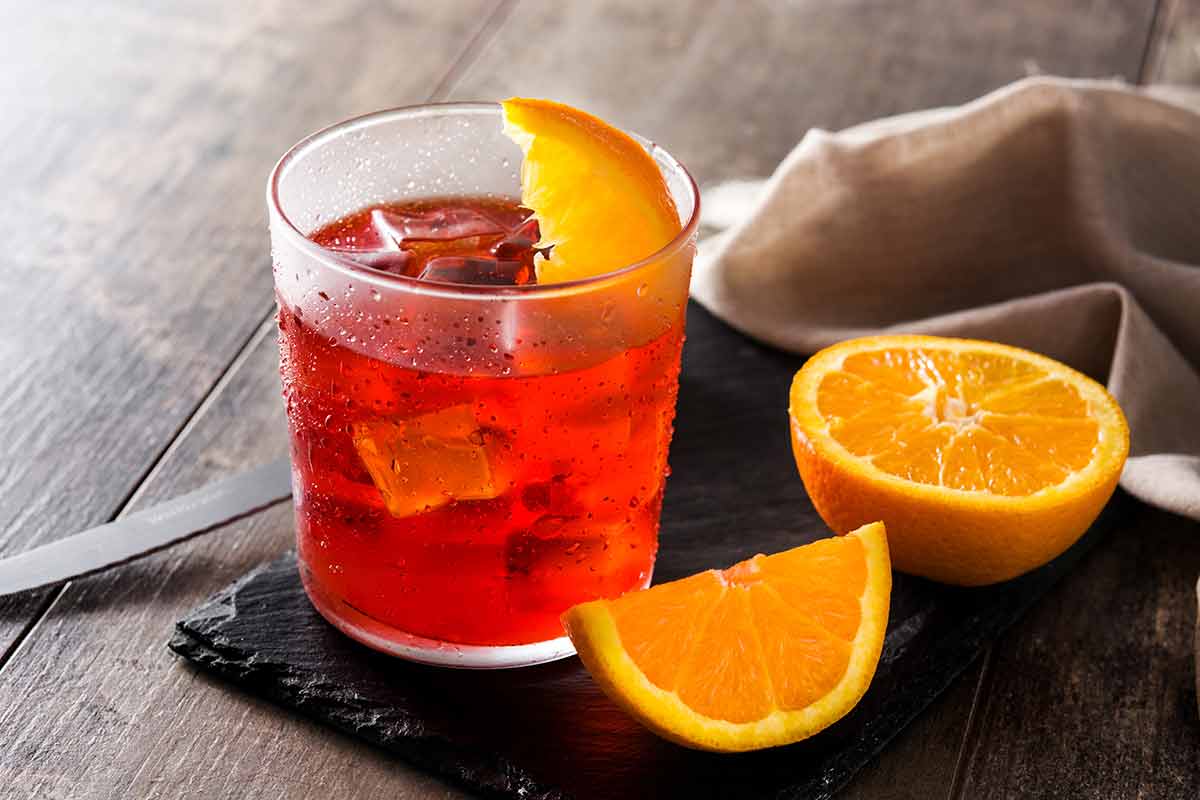
Legend has it that the first Negroni was created in 1919 in Florence’s Caffe Carsoni when Count Camillo Negroni asked the bartender to mix gin into his Americano cocktail instead of soda water.
It’s now one of Italy’s most loved drinks and will give you a pretty hefty kick, as the drink is made up almost entirely of alcohol.
Usually consisting of one part red vermouth, one part gin, one part Campari and topped with a peel of an orange, many companies have since started making ready-to-drink Negroni’s.
This cocktail is easily one of the most iconic Italian alcoholic drinks and well worth a sip.
4- Bombardino
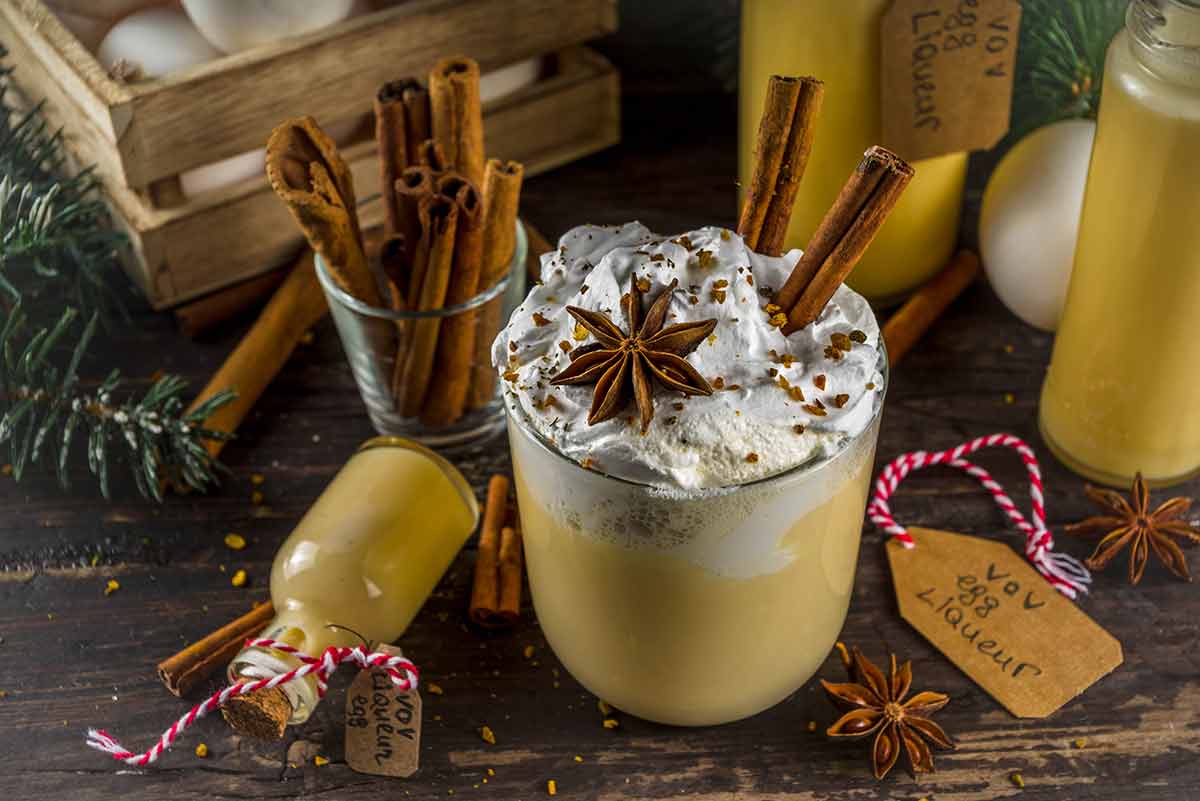
Visit the picturesque Italian Alps to savour a Bombardino made from fresh egg yolks, brandy, whipped cream, and cinnamon.
This creamy Italian cocktail was the brainchild of a chef in Lombardia who wanted to put an Italian twist on the popular eggnog drink to delight customers after skiing.
According to legend, the name Bombardino (which means bomb in Italian), comes from the reaction of the first people who tasted the drink who exclaimed ‘what a bomb’ after tasting it.
Today, the Bombardino is a popular winter cocktail you can enjoy in the ski resorts of Italy, Switzerland, the Czech Republic, Austria and France.
5- Aperol Spritz
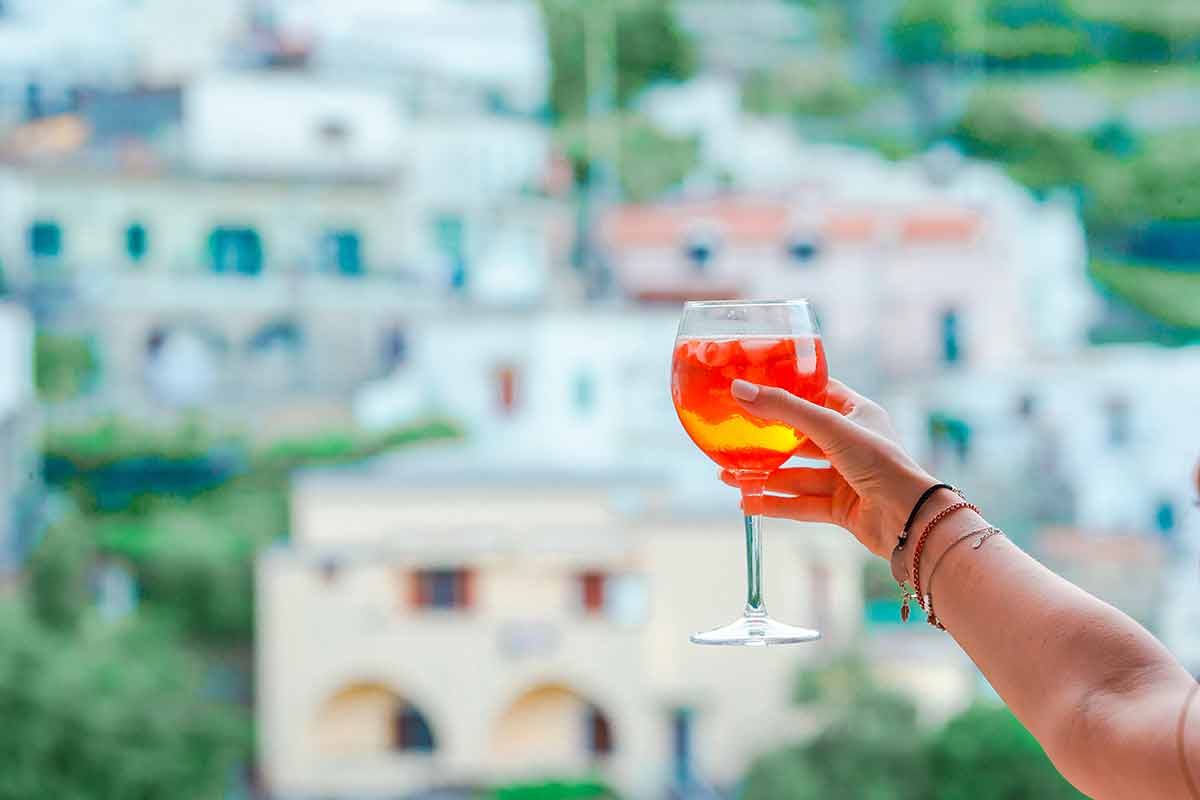
A drink as elegant as the Italian appetisers it is usually served with, Aperol Spritz mixes Aperol, tonic water and Prosecco wine to create a refreshing drink to savour.
Now popular worldwide, Aperol Spritz was first created during the 1950s in the northern Italian town of Padua and is very similar to Campari Spritz, another well-known Italian drink.
Often preferred over the more bitter Campari Spritz, an Aperol Spritz is much more enjoyable to drink and perfectly complements ciccheti (bite-sized pre-dinner snacks) served in cities such as Venice.
6- Hugo Spritz
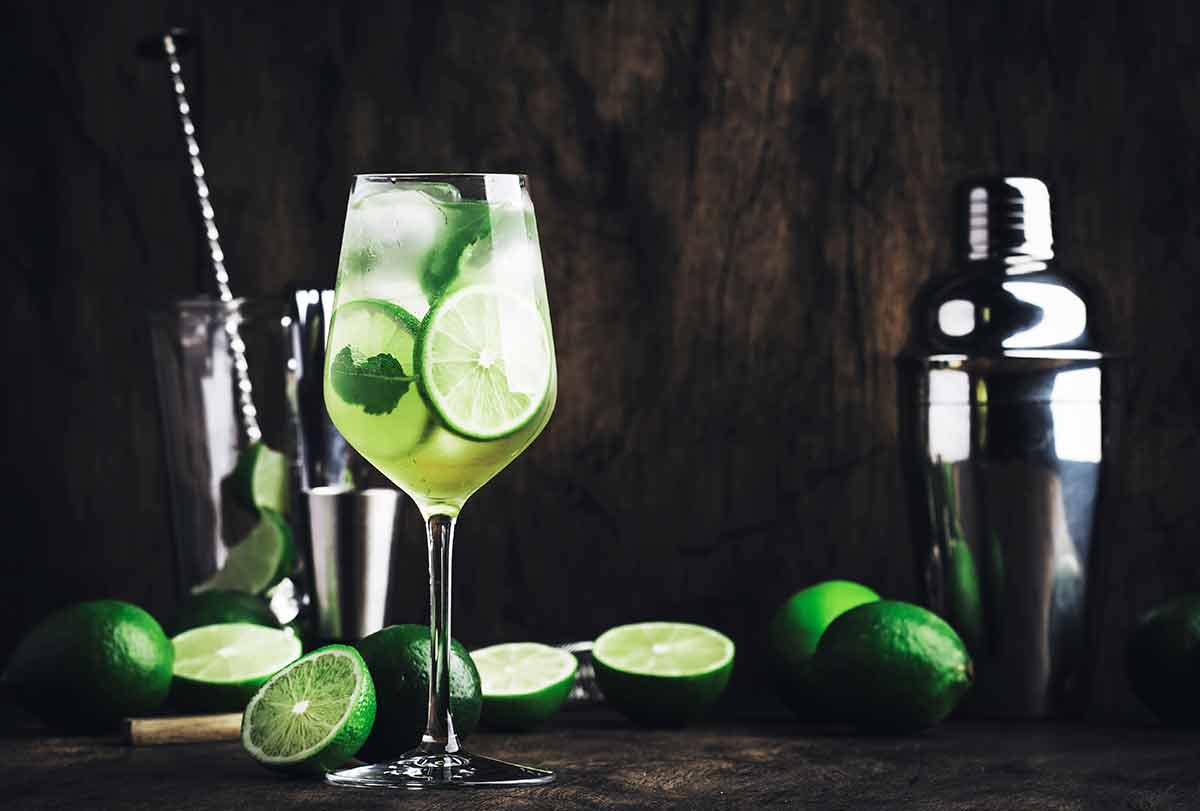
This light and refreshing cocktail has cemented itself as an Italian staple, despite only dating back to 2005.
Hugo Spritz is a sweet floral drink with relatively low alcohol.
Created by Roland Gruber in Italy’s northern region of South Tyrol, just across the Austrian border, the original Hugo Spritz had lemon balm that has since been replaced with elderflower syrup for extra sweetness.
Made from prosecco, elderflower syrup and club soda with mint leaves on top to garnish the drink off, the Hugo Spritz is an aperitif best served before a meal.
Initially created as an alternative to the popular Aperol Spritz, the Hugo Spritz has become a popular Italian drink in its own right.
7- Americano
The old-school Americano cocktail shares more similarities with an Americano coffee than you might imagine.
Both are strong and sometimes bitter, and both are as Italian as pizza and gelato.
First served at Gaspare Campari’s Caffè Campari bar in Milan in the 1860s, the drink has since become popular worldwide.
While most people know that the Martini is James Bond’s favourite cocktail, few would know that 007 ordered an Americano in Ian Fleming’s novel ‘Casino Royale’ and in ‘From Russia With Love’.
Traditionally made with Campari, sweet Vermouth and a slice of lemon, you can add club soda for extra sparkle.
8- Garibaldi
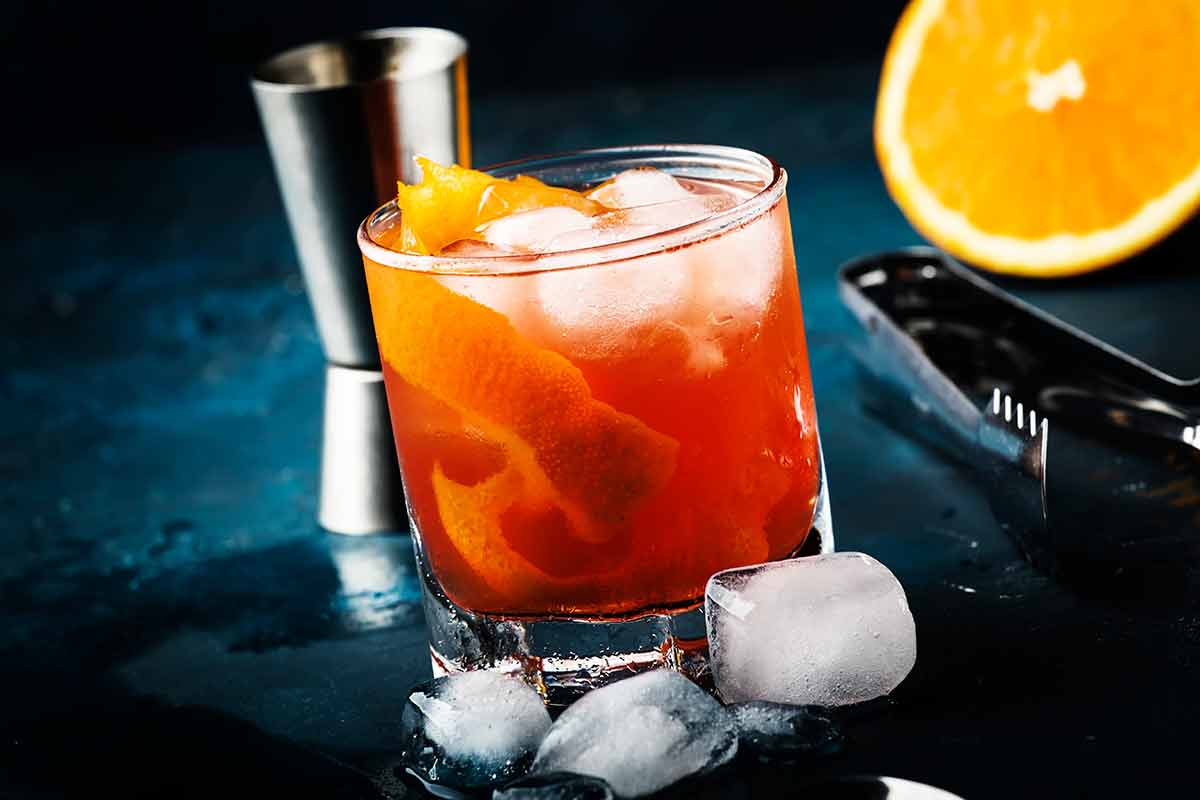
Created with fresh Sicilian and Calabrian oranges, this sweet fruity concoction was first served in the 1930s.
It was named in honour of Italy’s founding father and 19th-century revolutionary, Giuseppe Garibaldi, who united northern and southern Italy.
Garibaldi’s legacy lives on through the Garibaldi cocktail, which blends Campari from Milan in Italy’s north with freshly squeezed orange juice from the south.
While various versions can be found throughout Europe and beyond, unless a Garibaldi is made with Sicilian and Calabrian oranges, it’s not an authentic Garibaldi.
Looking for more things to do in Italy? Here are some places you will love!
- 20 Landmarks in Italy
- 20 Best Beaches In Italy
- 20 Places To Visit In Italy In Winter
- 20 Incredible Things To Do In Lake Como
- 15 Things To Do In Rome At Night
- 21 Things To Do In Turin
- 15 Things To Do In Venice
- 20 Italian Drinks And Cocktails
- 24 Best Beaches In Sicily
- 20 Venice Night Attractions
- 20 Things To Do In Milan At Night
- 20 Things To Do In Florence At Night
- 20 Things To Do In Sicily
- Venice in Winter
- 20 Fairytale Castles In Italy
- 15 Italian Movies On Netflix
- 15 Italian Shows On Netflix
- 6 Charming Towns in Puglia
- Sacro Monti di Varallo
- Hiking Stromboli
- Salone del Gusto – Slow Food Festival
- 20 Things To Do In Florence
- 20 Beaches In Malta
- When Is The Best Time To Visit Italy?
- 20 Italian Cities
- 20 Things To Do In Pisa
- 20 Things To Do In Pompeii
- Where To Stay In Venice
- Where To Stay In Cinque Terre
Italian Liqueurs
9- Limoncello
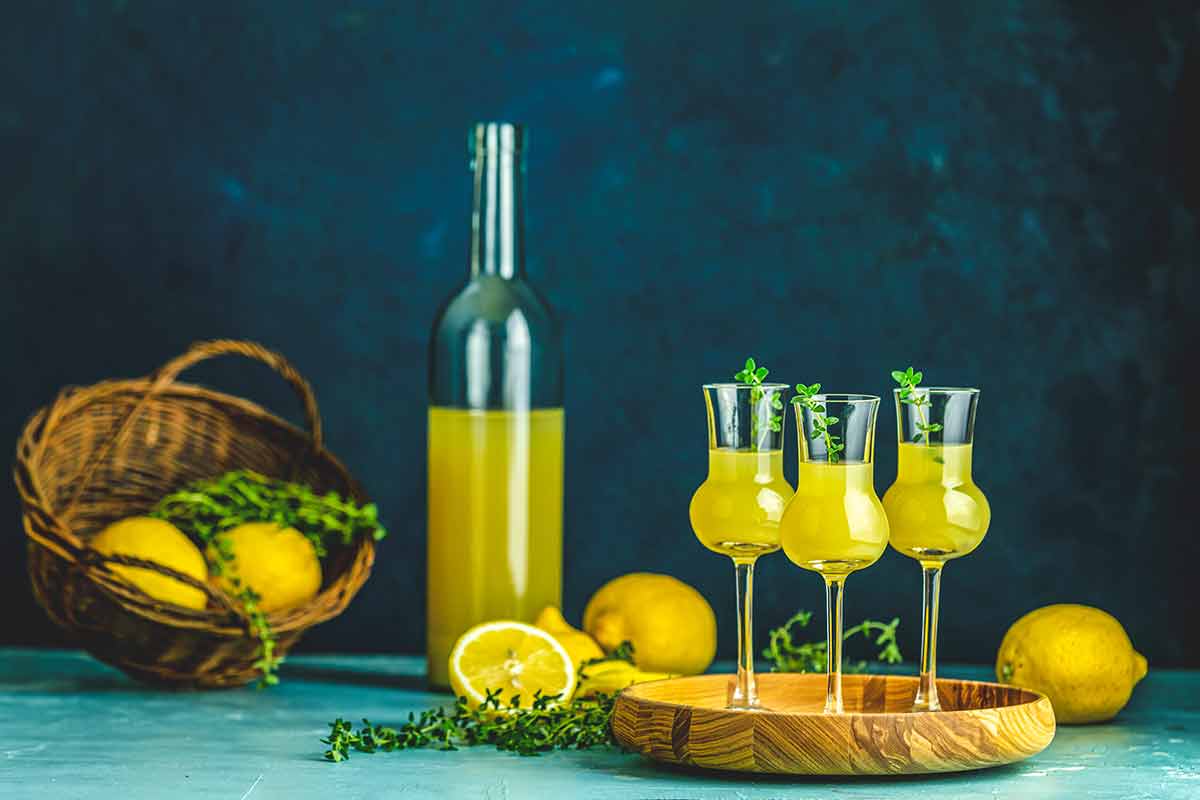
No Italian drink screams ‘la dolce vita’ quite like a glass of Limoncello, the famous Italian liqueur from the Island of Capri on the Amalfi Coast.
Although you can find it everywhere, the best Limoncello is still the traditional homemade version found throughout Italy.
Traditional Limoncello has a relatively high amount of alcohol that gives unsuspecting drinkers quite the kick.
The strong taste is absorbed by adding Sorrentine lemon peels and letting the alcohol soak into the peels for about one week, after which the entire mixture is left to sit for another month.
While time-consuming to make, the effort is worth it and drinking Limoncello is a highlight of any trip to this incredible Mediterranean country.
10- Sambuca

Created by Luigi Manzi near Rome in the town of Civitavecchia in 1851, Sambuca is a colourless liqueur with a high alcohol amount (usually between 38% and 42%).
Legend has it that Manzi named the liqueur after the Sambuchelli people who brought water mixed with anise into the fields for the farmers to cool off on the island of Ischia.
Usually served after dinner as a digestive, Sambuca is enjoyed by placing three coffee beans on top to chew while drinking.
Another common way of serving Sambuca, especially in upmarket restaurants, is by setting the drink on fire for an amazing effect.
11- Amaretto
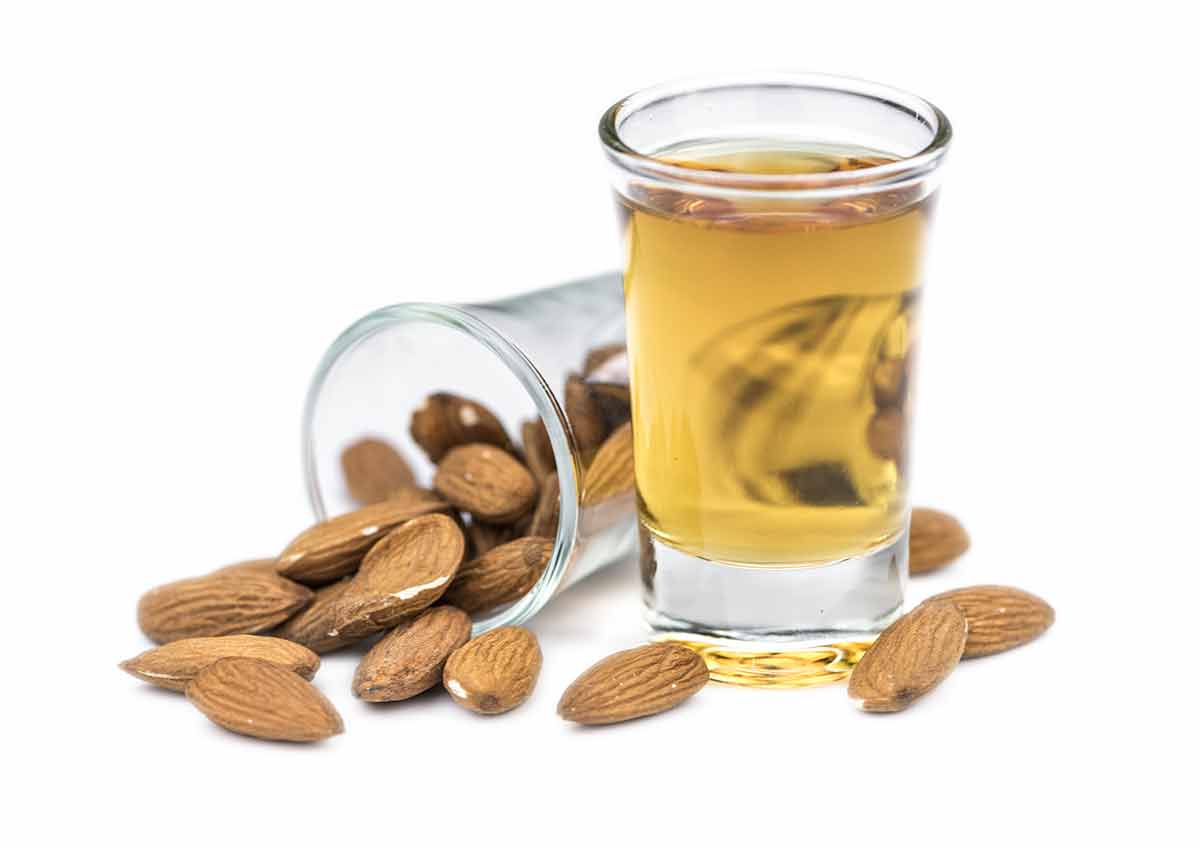
Amaretto is an Italian liqueur that originated in Saronno near Milan in northern Italy.
Although its origin is unclear, legend has it that one of Leonardo Da Vinci’s students, Bernardino Luini, received a brandy-soaked with apricot seeds as a gift after painting the portrait of a widowed innkeeper.
Numerous variations of Amaretto can be found, with some using almonds instead of apricot seeds.
Amaretto is a versatile drink that you can consume in various ways, such as cola or coffee and you will also find Amaretto in various tiramisu dishes around Italy.
12- Nocino
This opaquely brown liqueur from northern Italy’s Emilia-Romagna region is traditionally made from unripe green walnuts and has a sweet, spicy flavour with hints of bitterness.
This flavourful palette makes Nocino an excellent liqueur to drizzle into or onto desserts.
As a drink, Nocino is sipped neat, however, you can also use the liqueur in cocktails such as the Walnut Manhattan and the Nocino Sour.
Nocino is an ancient drink that dates back to Roman times when it was used as a potion more than anything else.
When visiting Italy, try Nocino during your travels but be careful not to drink too much as there’s a hefty amount of alcohol.
13- Grappa
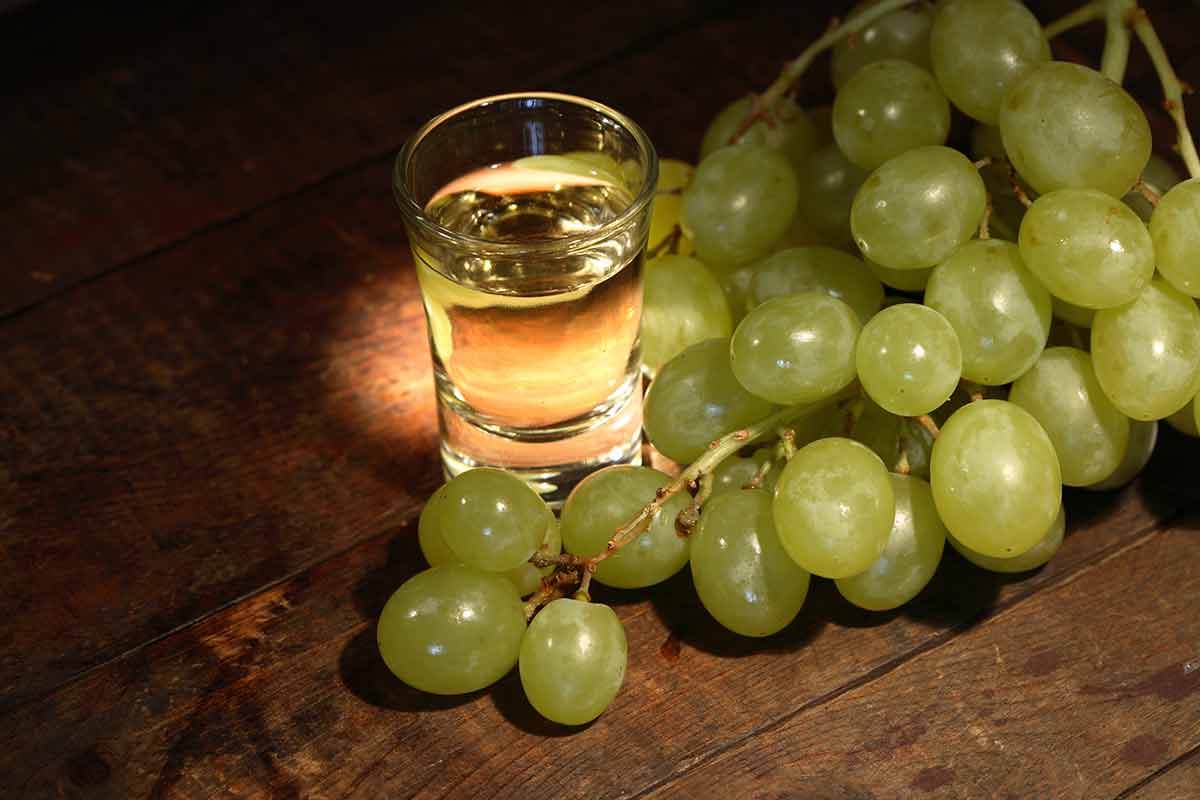
Made from grape stems, seeds and skins used to create traditional Italian wine, Grappa is a pomace brandy distilled from grape leftovers after the winemaking process is completed.
Grappa usually has undertones of grape, apple, pepper and wood.
It’s mostly distilled in northern Italy’s Piedmont, Valle d’Aosta, Lombardy, and Veneto regions.
Grappa is an acquired taste as it’s usually quite strong, with alcohol levels ranging anywhere between 35% and 60%.
If it’s your first time tasing Grappa, choose one with a lower alcohol content of around 37%.
Like wine, Grappa can get better with age.
14- Vermouth
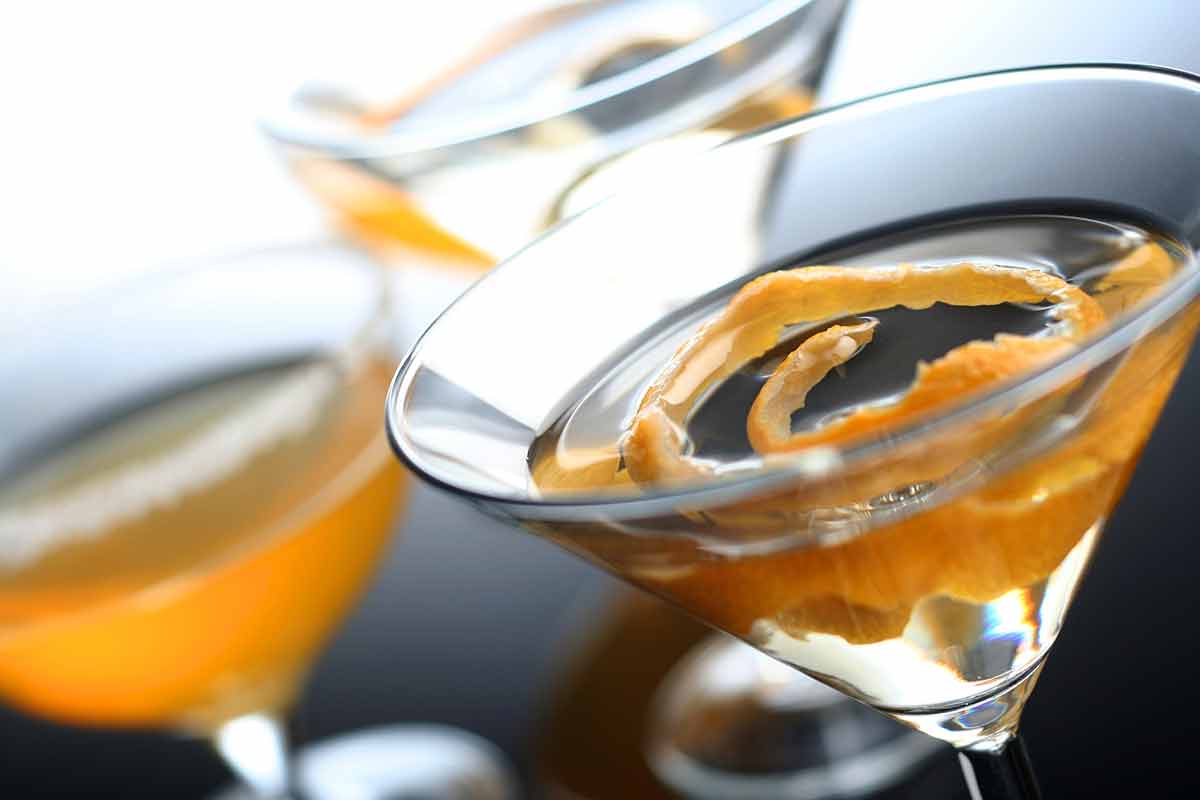
While extremely popular across Spain, Vermouth has its roots in Turin in Italy’s Piedmont region.
A local merchant perfected the drink we now know as Vermouth in the 18th-century based on old recipes.
A fortified wine (a wine consisting of a mixture of brandy), Vermouth has to consist of no less than 75% wine to be considered authentic Vermouth according to Italian law.
Vermouth can be flavoured with other herbs and spices, such as citrus peel, cloves and ginger, however, a must-have ingredient in any Vermouth is wormwood.
Given its abundance of herbs, Vermouth was initially used mainly as a medicinal drink before becoming the popular aperitif enjoyed today.
Italian Coffee Drinks
15- Cappuccino
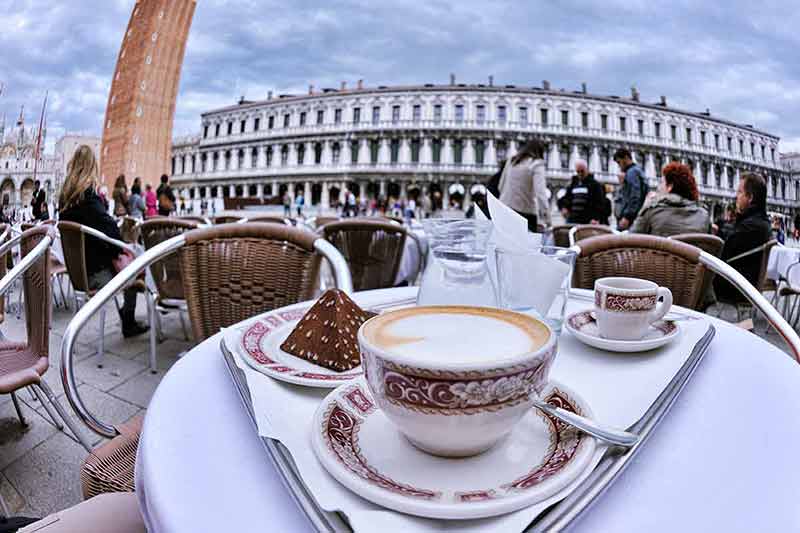
Invented by Capuchin monks, or “Frati Cappuccini” in Italian, in the 17th-century in a monastery just north of Rome, Cappuccino has become one of the most-consumed beverages worldwide.
According to legend, the monks added milk to black coffee during the middle-ages to purify the brew that they considered the devil’s drink because of its addictive and energising properties.
Italians always drink cappuccino in the morning and never in the afternoon.
While no cappuccino is made the same way, it’s generally common to make it using a single shot of espresso, steamed milk or cream, plenty of foamed milk and a sprinkle of cinnamon on top.
16- Espresso
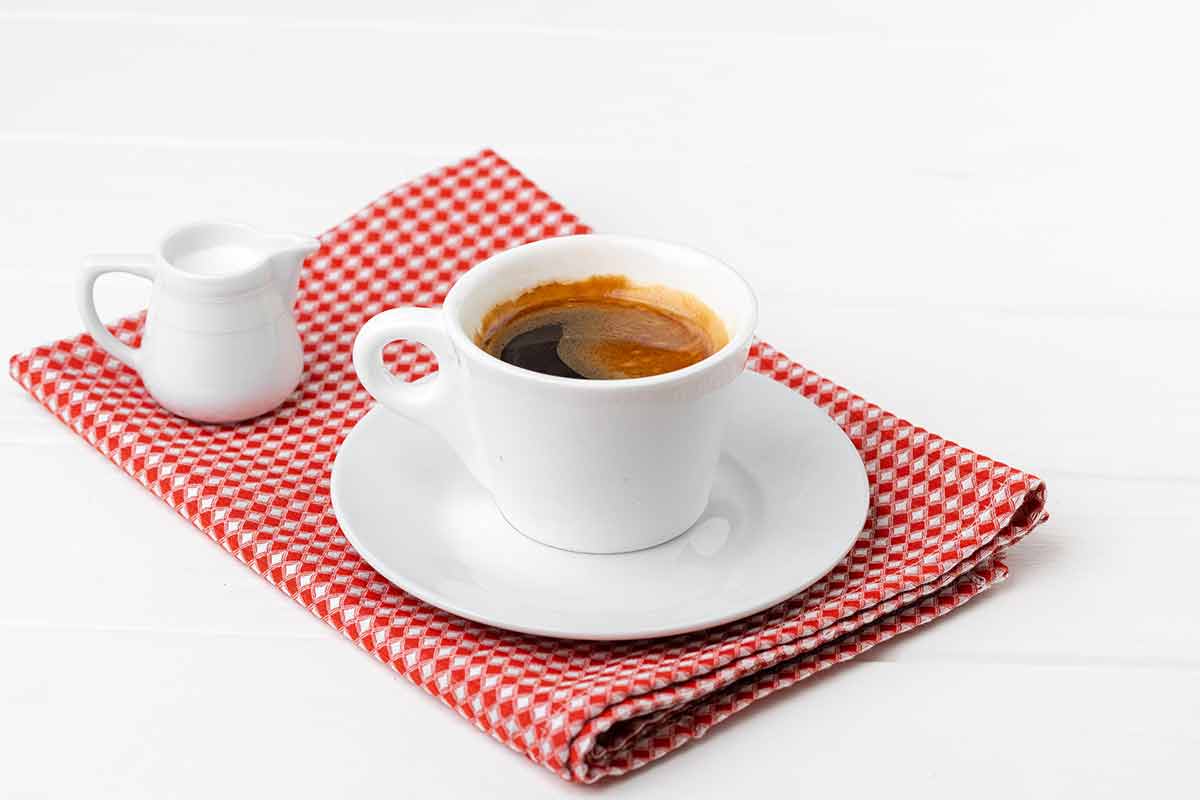
Originating in Italy between the late 19th century and early 20th century, espresso was created to cut down the brewing time needed to create a shot in less than a minute.
This quintessential Italian coffee is bitter and can be sweetened to make it easier to drink.
No matter where you are in Italy, it goes without question that you need to try an authentic shot of espresso at least once during your stay in this picturesque corner of the world.
Italian Wine
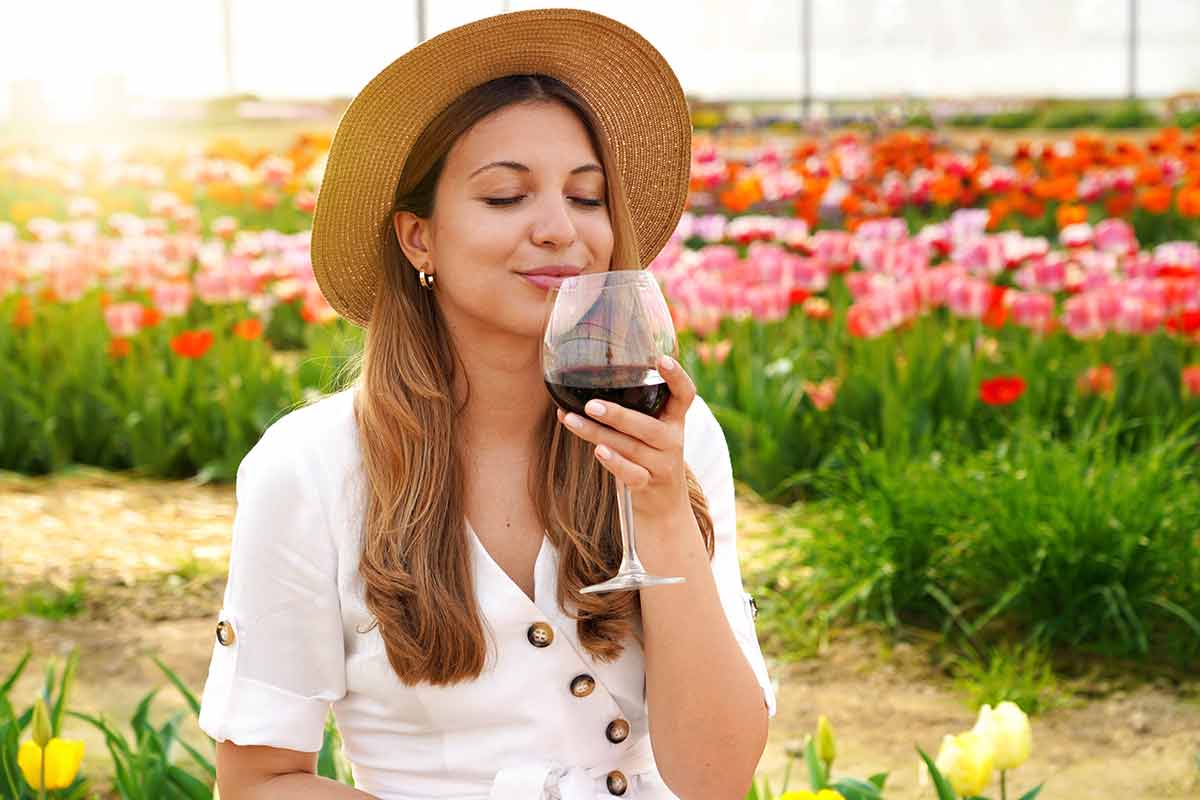
17- Brunello di Montalcino
Brunello di Montalcino wine is a red wine produced around the town of Montalcino in Italy’s Tuscany region.
A wine as beautiful as the region it’s produced, Brunello di Montalcino is one of Italy’s best wines, with a price that matches.
Brunello di Montalcino is produced using Sangiovese grapes and is a bold, full-bodied wine.
Younger wines can be tart and earthy, while an aged Brunello di Montalcino is smoother.
18- Chianti
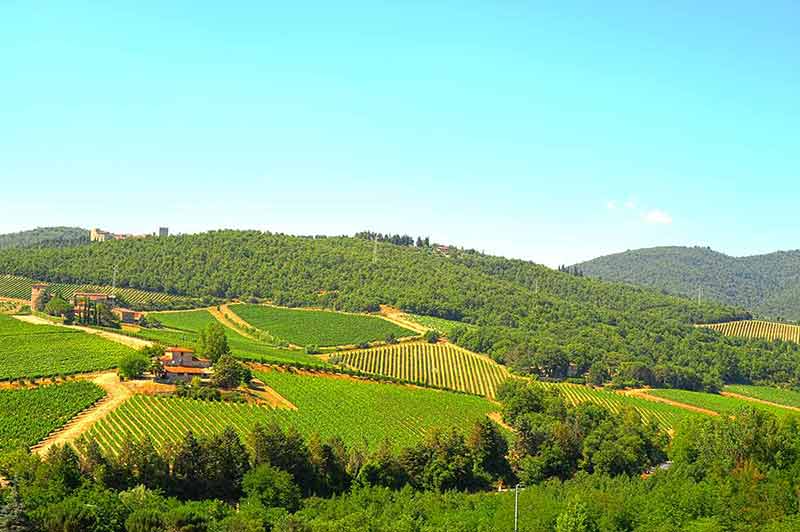
The dry-red Chianti wines are a product of Italy’s most significant wine-producing region of Tuscany and the region’s most famous wine.
A Chianti must consist of at least 70% Sangiovese grapes and must be produced in Tuscany for it to be called Chianti.
Chianti wines are rated (and ratings are visible on the labels) according to the amount of Sangiovese grapes used to make the wine and the length of time the wine has been aged.
Best served with a lovely view of Tuscany at mid-afternoon, a good bottle of Chianti will make your trip memorable.
19- Prosecco
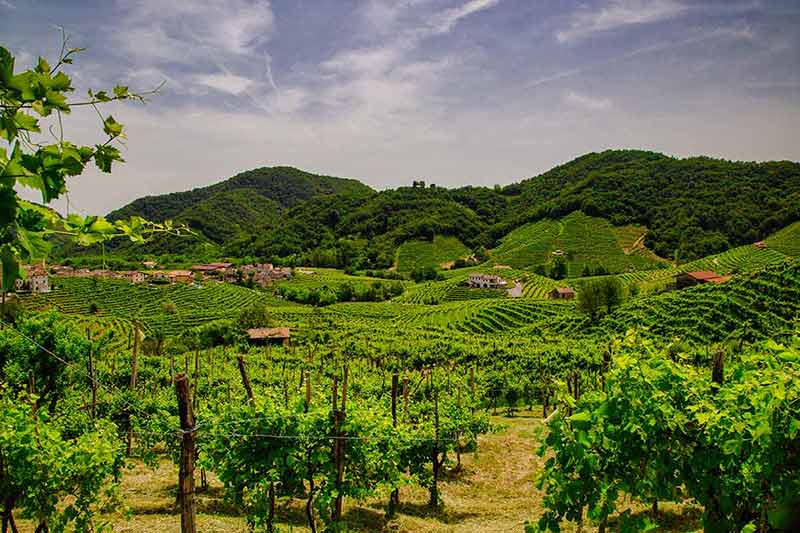
Prosecco wines are your classic Italian white wines produced between the regions of Friuli Venezia Giulia and Veneto and can come as sparkling wine or as normal white wine, usually made using the Charmat method.
Italy’s most acclaimed prosecco is the Prosecco di Conegliano-Valdobbiadene, however, numerous other prosecco wines enjoy DOCG classification reserved for top quality wines from Italy.
Prosecco’s are often combined with other alcohol or fruit to create refreshing cocktails or consumed like a typical white wine.
20- Castelli Romani
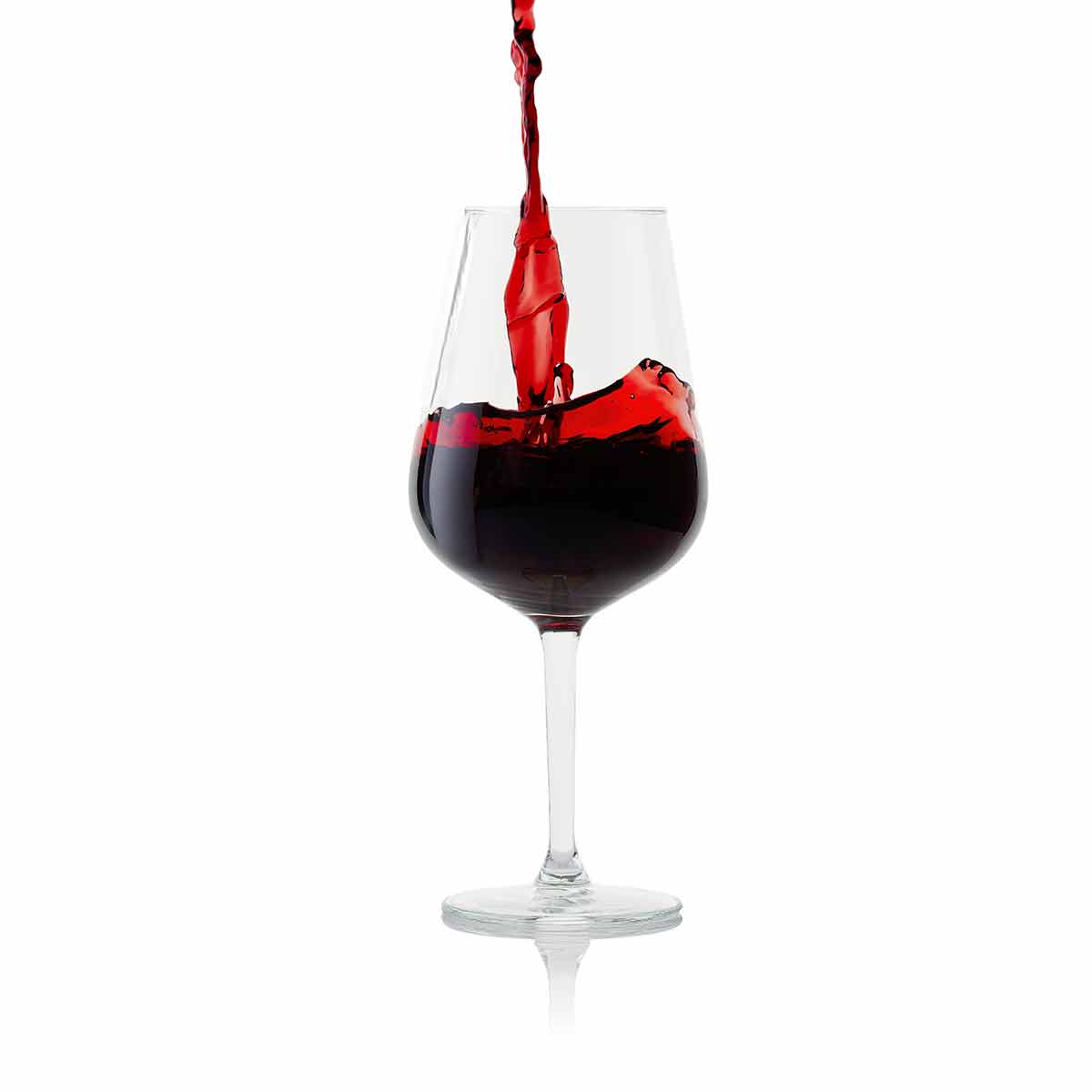
Castelli Romani white and red wines are grown in Italy’s Lazio region to the southeast of Rome.
Historically a summer escape for Roman nobility, Castelli Romani is a collection of 14 towns and villages in the Colli Albani hills.
The region has multiple volcanic calderas that erupted more than 36,000 years ago.
For more drinks around the world read:
- 20 Italian Cocktails and Other Drinks
- 20 Japanese Cocktails and Other Drinks
- 21 Spanish Cocktails and Other Drinks
- 25 American Drinks and Cocktails
- 20 Greek Drinks and Cocktails
- 20 German Drinks and Cocktails
- 20 Turkish Drinks and Cocktails
- 20 Polish Drinks and Cocktails
- 20 Jamaican Drinks and Cocktails
- 20 Mexican Drinks and Cocktails
- 20 Indian Drinks
- 20 Thai Drinks and Cocktails
- 20 French Drinks and Cocktails
Plan Your Trip
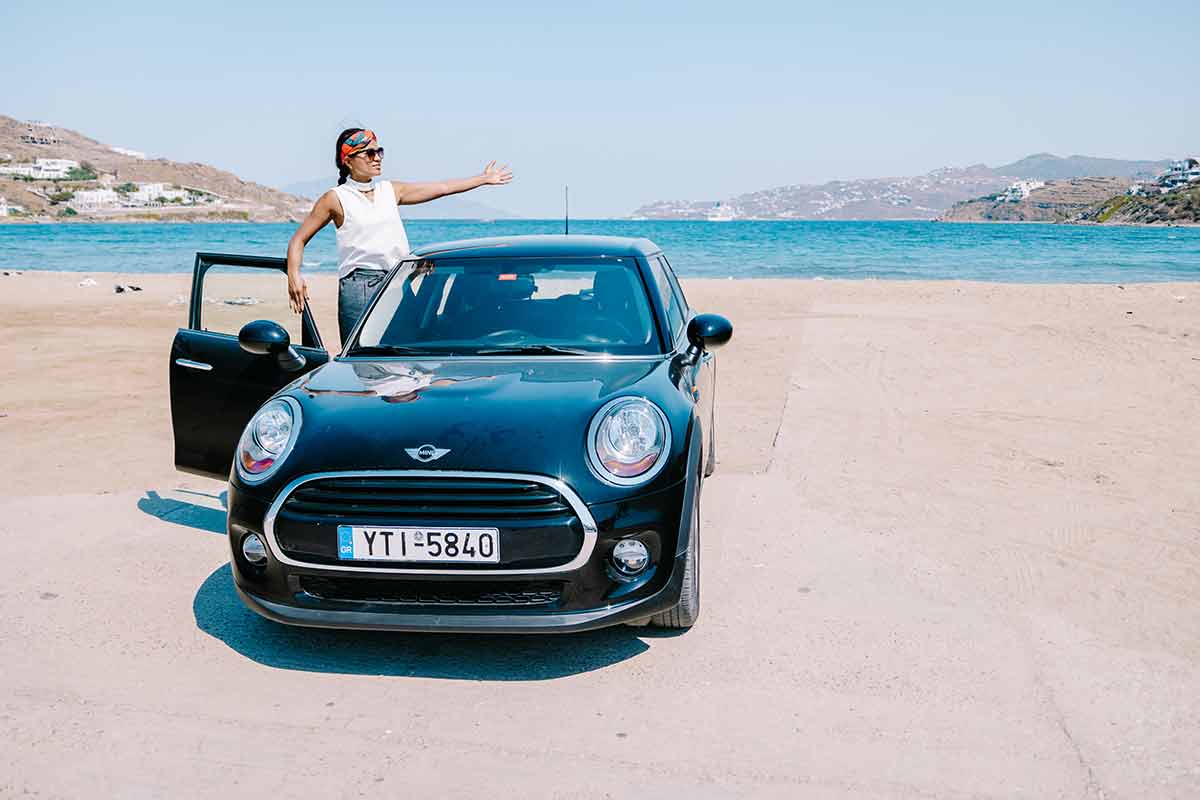
Rent A Car – Find the best car rental rates at Discover Cars. They compare car hire companies to provide you with the best deal right now.

Find A Hotel – If you’re curious about this article and are looking for somewhere to stay, take a look at these amazing hotels.
